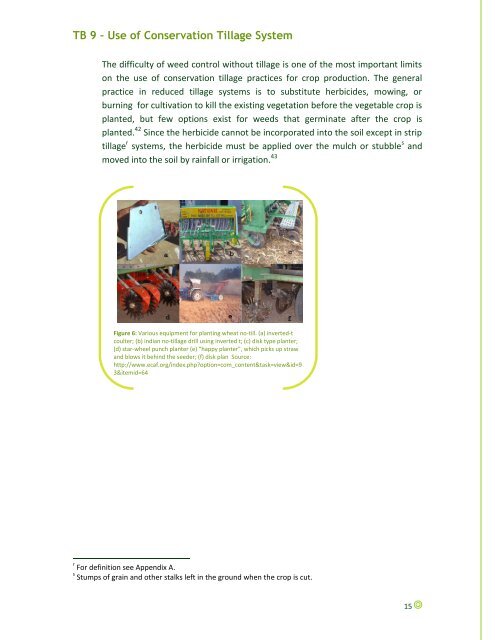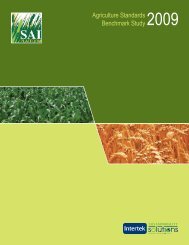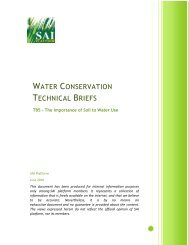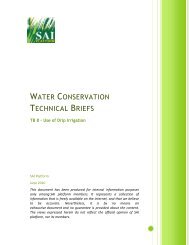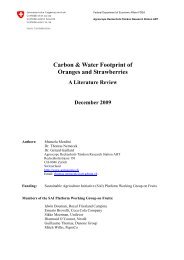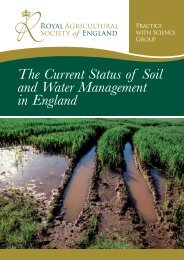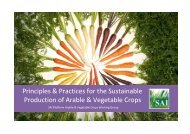Download file - SAI Platform
Download file - SAI Platform
Download file - SAI Platform
You also want an ePaper? Increase the reach of your titles
YUMPU automatically turns print PDFs into web optimized ePapers that Google loves.
TB 9 – Use of Conservation Tillage System<br />
The difficulty of weed control without tillage is one of the most important limits<br />
on the use of conservation tillage practices for crop production. The general<br />
practice in reduced tillage systems is to substitute herbicides, mowing, or<br />
burning for cultivation to kill the existing vegetation before the vegetable crop is<br />
planted, but few options exist for weeds that germinate after the crop is<br />
planted. 42 Since the herbicide cannot be incorporated into the soil except in strip<br />
tillage r systems, the herbicide must be applied over the mulch or stubble s and<br />
moved into the soil by rainfall or irrigation. 43<br />
Figure 6: Various equipment for planting wheat no-till. (a) inverted-t<br />
coulter; (b) indian no-tillage drill using inverted t; (c) disk type planter;<br />
(d) star-wheel punch planter (e) “happy planter”, which picks up straw<br />
and blows it behind the seeder; (f) disk plan Source:<br />
http://www.ecaf.org/index.php?option=com_content&task=view&id=9<br />
3&itemid=64<br />
r For definition see Appendix A.<br />
s Stumps of grain and other stalks left in the ground when the crop is cut.<br />
15


